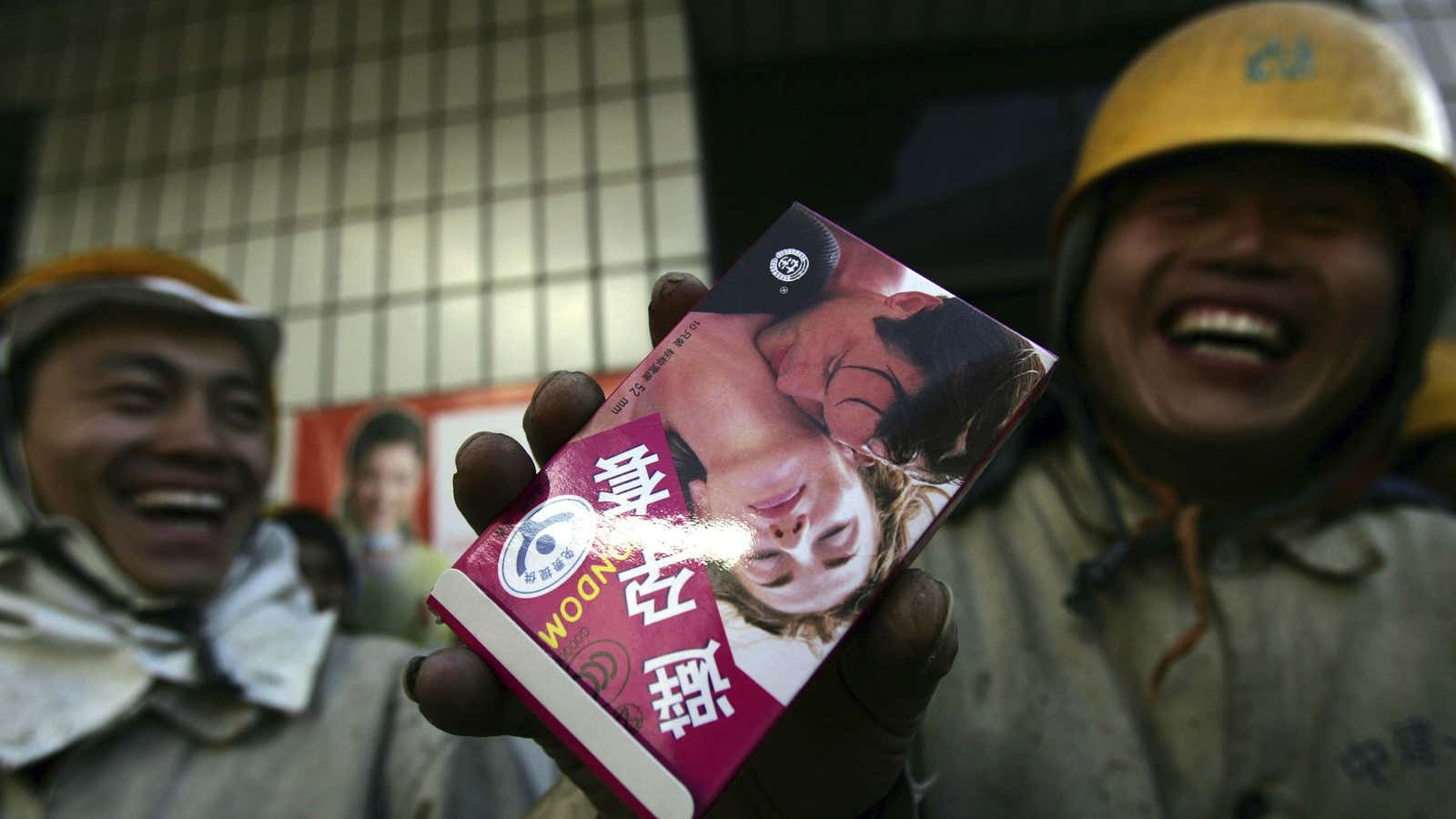On May 15, Chinese authorities announced that they had seized nearly 5 million knock-off condoms and arrested 37 people suspected of manufacturing them. The “bust,” as Chinese state media described it, isn’t anything new. In 2010, Chinese authorities seized 2 million unsterilized condoms from a factory in Henan. They confiscated a bevy of condoms lubricated with vegetable oil in 2009. And in 2008, US authorities discovered that China had exported more than one million fake Trojan condoms to the US. The latest crackdown, it seems, is just a showy slap on the wrist for a thriving national industry.
Indeed, there are hundreds of millions of counterfeit—and potentially faulty—condoms circulating China (pdf, p. 31), the world’s fourth-largest maker of condoms. That’s a major public health risk in a country where family planning is governed by a one-child policy, and a growing commercial sex industry is spreading sexually transmitted diseases.
Widespread knock offs in China have depressed condom use among the sexually active (as have poor sex education and cultural taboos about sex). A study of 1,850 sexually active students in eastern China found that only 15% of male students and 17% of females used condoms consistently. A 2008 study of female sex workers in southwest China found that over one-third of the condoms they used broke.
The Chinese government claims it’s trying to change all that. Last year, authorities pledged by 2015 to cap the number of new HIV/AIDS infections (which have reached 780,000) by boosting condom use among high risk groups to 90% (that includes sex workers, migrant workers, homosexuals and youth). The government has placed condom vending machines in hotels and other public areas, distributed condoms to the public, loosened restrictions (pdf, p.69) on condom advertising, and called for sex education campaigns in high schools. (Previously, such efforts were thought to promote promiscuity and extra-marital sex.)

But it will take a lot more than that to stem the tide of phony prophylactics. As a major exporter of the contraceptive, China can produce condoms at low costs with high profit margins. One condom in China can cost as little as $0.02 to produce and retail for as much as $3.25, or 20 renminbi. Chinese authorities are loathe to crack down on counterfeit industries like these because they feed vital networks of factories, distributors and other businesses in the country. As long as the money is rolling in, public safety will have to wait.
